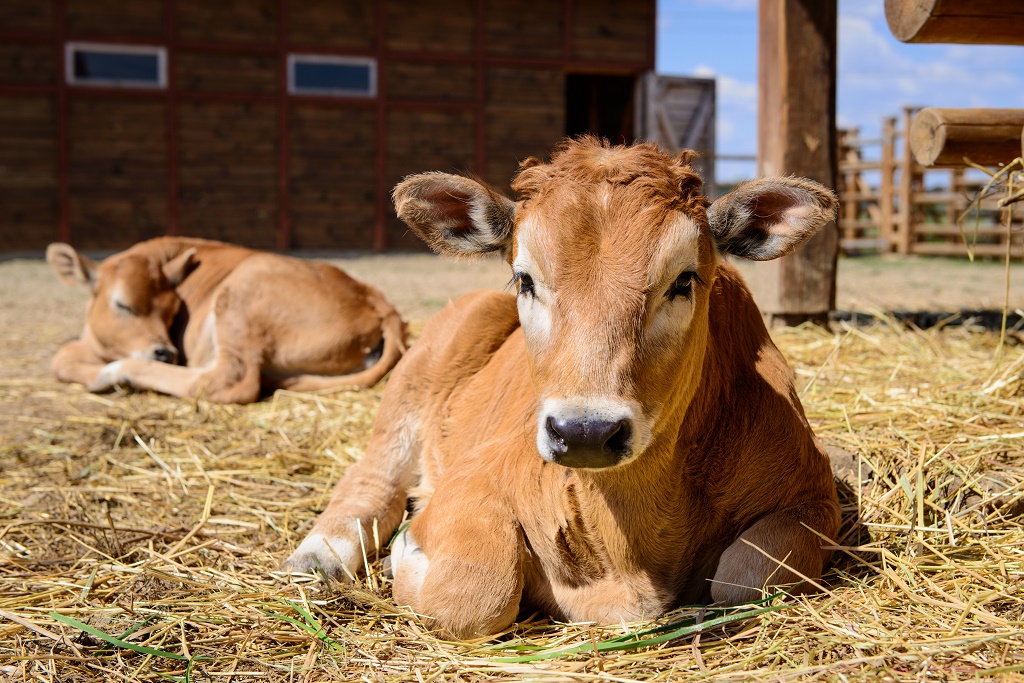
Cows are animals everybody knows about virtually anywhere in the world, and they are also in high demand. Their milk, meat (beef) and other products are some of the most consumed animal products anywhere in the world.
A lot of people want to know how much it would cost them to raise these animals that are on high demand.
It would cost you up to $900 to raise a cow
One of the challenges that you will have to deal with on issues concerning the cost of raising a cow is that price list projections are usually inconsistent and do not maintain a fix in price after weeks or months, or even years. Because of that, price lists are usually only accurate at specified or range of times after which they become obsolete.
Because of time factor amid other things, prices are not always fixed, or not oftentimes, a hundred percent accurate, but they can give clues and information as close to what’s at hand as possible.
In order to be around perfect price, price lists are normally forecasted more frequently to keep you updated.
Also, we suggest that you should as well have it at the back of your mind that the projection of the prices for cattle is an annual average price that is given as regards to certain measurement of weights of different heifers, slaughters and steers.
It would cost you up to $50 per one hundredweight for a 1200 pounds slaughter. If you take the price of raising a cow in 2005 to be about $400, you will be observing an increasing change in price of about 5.6% every year since then. This means that presently, you are looking at $900 for raising a cow. This is a huge inconsistency in price.
A heiger of up to 520 pounds would cost you $130 per one hundredweight. For steers, $145 per hundredweight would be ideal for 550 pounds.
Having given this overview, let us carefully look at how much it will cost you to raise a cow.
Learn more here!
How Much Does It Cost To Raise A Cow?
A lot of things are involved in this matter; one of your major investments will be for infrastructure and equipment. Let’s look at some of these pieces of equipment.
What are the Equipment Necessary for Raising Cows?
Housing Equipments
To raise any livestock, one of the first things to take into account is what housing plan to employ. There are different types of housing structures one can employ in raising their cow. Here are some:
Open-sided, Single-slope-roof Shed

This structure is the most common one used in a cattle farm. It is relatively cheap and it is not difficult to build it. Usually, they are constructed to face the southern part so the cows can enjoy the sun in winter.
Open-sided, Clear Span Pole Shed

This structure is more spacious and allows for equipment to be able to remove things in the likes of manure. If you don’t have plenty of herds to raise, you can go for this structure. You can darken the back end of the structure but try as much as possible to provide a lighting system and a ventilation system too for the herd.
Former Dairy Barns

You can take advantage of dairy barns that have been forfeited by former dairy farmers or those not in current use. One of the advantages of this is that you will not have to put up with the cost of putting up an entirely new structure.
All you have to do is to renovate the barns and this implies a cheaper cost. In former dairy barns, there is provision for lighting and ventilation. But then, because there is probably no plan for taking out manure, you will have to add this to your plans before renovating.
Hoop Barns
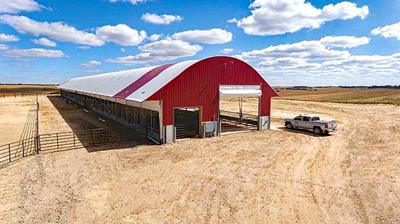
If you are a cattle farmer and you are looking for a cheap structure, hoop barns are a very great option. A hoop barn is constructed with the pattern of a greenhouse used in crop farming.
The challenge with hoop barns is that because they are patterned after a Greenhouse, they are hot during summer, and ventilation is low. If you plan to graze your cow during such hot seasons, then you do not have to bother much about the hotness of hoop barns in summer. You can click on this link to learn more!
It will cost you between $2,581 and $3,250 to build a 10*14 shed. This largely depends on the style you prefer.
For a 12*16 shed, you might spend between $3,500 and $4,500 depending on whether it is a low-wall barn or a cottage-style shed. You can get more details here!
Generally, the average cost of building a shed is between $800 and $4,000.
Feeding Equipment
Feed Mixer

What a feed mixer does is basically to slice and mash different kinds of products so that you can get a softer, more uniform feed ration for your cow. This makes is leas tedious to distribute the feed efficiently. You can learn more about this here.
Feed Bunks

You should consider the capacity of the bunk as well as the length when choosing a feed bunk for your cows. Choose good quality feed bunks that are also less expensive. Using feed bunks, you can feed more than one cow at a time and you do not have to worry about getting more feeders relative to the number of cattle you have.
Portable Hay Feeders

A portable hay feeder is designed such that the cattle can easily put their head through to feed. With this, they would not need to stick out their heads or stand to chew. So, there is a reduced chance of wastage of hays. In choosing a portable feed rack, it is advisable to choose the round ones because they are easy to roll from one spot to another.
Water Equipment
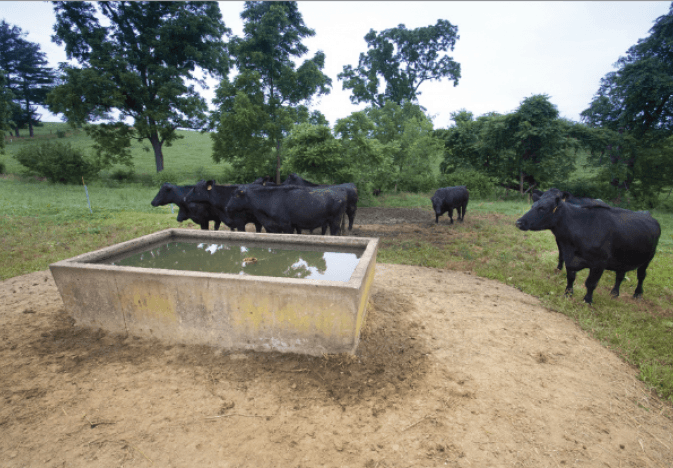
The importance of water in the raising of livestock cannot be overemphasized. There are wide ranges of readily available equipment for providing water for your cow. You can combine several watering systems all through the year. You may even employ portable watering systems if you are grazing animals.
This method is so that the animals will not just gather in one place to compete for water and food when there is enough space. When winter comes, you can use heated units. When considering what watering system to employ, the most vital point to take into account is to know the water needs of your cows and whether the watering system you have in mind could serve them effectively.
Headgate

This is arguably the most vital part of the facility. You should be sure that it is strongly built, secure, not difficult to operate, and that it operates without hitches and as quiet as possible.
There are four fundamental types of headgates:
Self-catching Headgate
It is built such that the motion of the cows causes it close automatically.
Scissors-stanchion Headgate
Pivoted at the base, this type of headgate parts in two.
Positive control Headgate
This type closes tightly around the neck of the animal.
Fully-opening Stanchion
They can come with bars that are straight or those that are curved. Straight ones are the safest because they hardly muffle the cow. The challenge with it is that if you do not utilize nose bars, the cows will be able to push their heads upwards and downwards. You can control your cow more with the curved bars but you risk muffling them. Using any of these is better than employing the positive-control headgate. Remember that no matter the headgate type you choose, you can adjust them to rightly for the cows.
Click here to learn more about headgates with pictures and videos.
Holding Chute
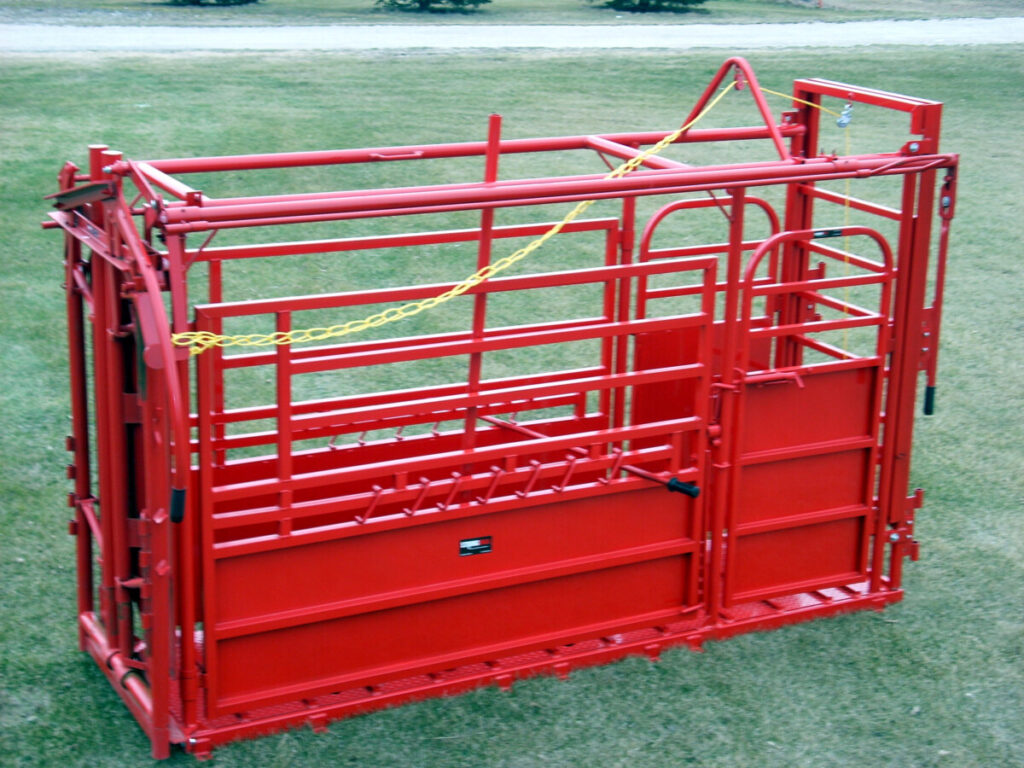
Just behind the headgate, you find the holding chute. Try to minimize the width of the holding chute and keep it at about 25 inches, but leave it adjustable so that it can serve for animals of various sizes. Make the sides firm and solid. This is so that the cows will not look outside to their surroundings and be frightened.
Working Chute
This is a connector between the holding chute and the holding pen. A good working chute should be able to hold up to five cows at the same time.
Crowding Pen

150 square feet is good for a crowding pen. You find it behind the working pen. A crowding pen is good enough if it can hold up to give cow heads.
Holding Pen
The holding pen should be as spacious as 20 feet for each cow.
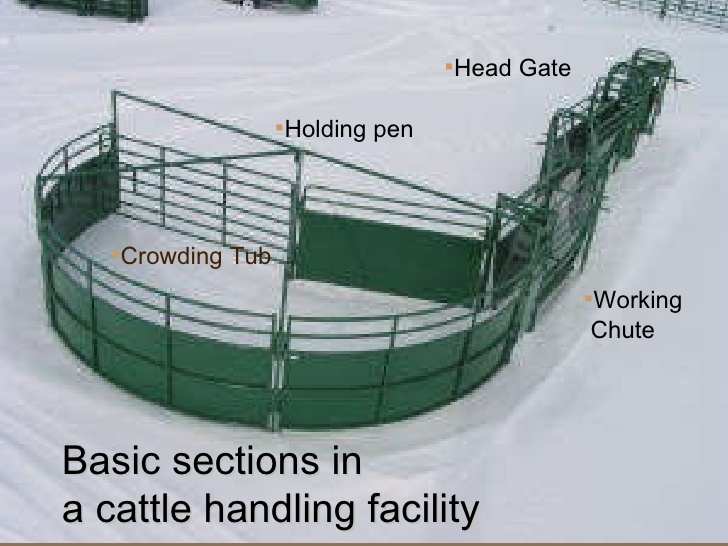
Some Cattle Diseases
Diseases are inescapable. Even human beings fall sick, how much more animals. This is a major challenge in raising cows but the good news is that there are both preventive and curative measures you can take to help your cows. I will be sharing some of these diseases and their respective preventive and helpful measures, so you can help them when the need arises.
Grass Tetany Disease
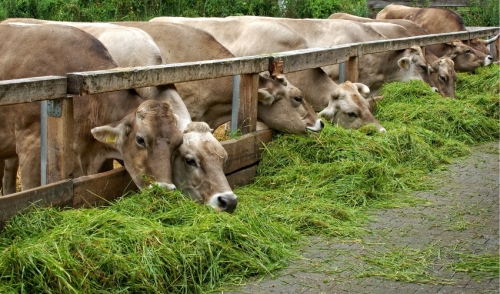
This is a serious disease caused by feeding your cows pasture that contains little or no legumes. Also, using soil types that have a high level and availability of potassium are related to increased cases of grass tetany. The disease leads to low blood serum levels of magnesium from a dramatic deficiency of minerals in forage and pasture.
So, when you start noticing symptoms like unusual nervousness, grinding the teeth, violent convulsions, collapse, and awkward gait, have it in mind that your cattle might be infected with grass tetany.
You have to be very careful because most times cattle farmers have lost their animals out of carelessness. The right time to take preventive measures is immediately you notice these symptoms. Please note that grass tetany occurs almost at all times of the year, but mostly during April and May.
Grass tetany is prevalent in cows aged 6 years old, or nursing calves that are less than 2 months of age.
Prevention and Treatment
Don’t become too scared, there is a way out. Apply these preventive measures to your cows to avoid grass tetany and the treatment also to your infected cows.
- Avoid feeding them grasses below 8-10 inches, patiently wait until early spring to grow pasture, don’t be in a hurry.
- Handle the newly infected cows quietly and gently, don’t hit or stress them hard.
- You should have a stash of Magnesium in addition to your existing mineral supplements from the period of May till October.
- When the situation is more critical, prepare a 200 milliliters saturated solution of Epsom salts, and inject it under the skin of your cow in multiple sites with 10 milliliters injected at each site.
Foot Rot
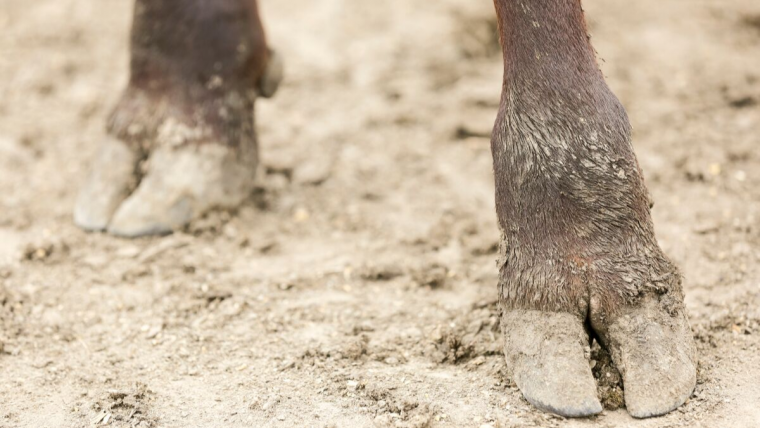
This disease is caused by exposed cuts, bruises and puncture wounds in your cattle. Learn to treat their wounds as soon as possible because they are likely to contact foot rot diseases. This disease can even be stored in the soil for a long time without you knowing it. The bacteria Fusobacterium necrophorum has been proven to cause foot rot.
Symptoms of the disease include; lameness, swollen foot, reddening of the tissues above the hoof, and loss of appetite and body weight.
Prevention
If you can carefully apply what I’m about to show you, it will help reduce the swollen foot, and eventually, heal your cattle.
- Avoid mud accumulation by maintaining the drainage around water tanks. When there is too much mud accumulation, the foot of your cow can get stuck, causing bruises and unnecessary injuries.
- Provide your cattle adequate calcium, phosphorus and vitamin A. This will help make their bones and tissues healthy.
- Mix their feed with Ethylene diamine dihydriodide (EDDI, tamed iodine) to help provide 50 milligrams daily per head, it has been used over the years as a preventive measure.
- Always examine the feet of your cattle to check for foreign objects like nails, strings of wire etc. Where you find any as you run routine checks, please treat as soon as possible.
- Provide antibiotics for them.
Please, be sure to consult a veterinarian for proper description of drugs. Don’t assume and kill your cattle unknowingly. That said, the minimum dose for calves should be at least 1 gram of chlortetracycline per animal per day. Increase the amount of antibiotic for larger animals. Lower dosages may contribute to the formation of drug-resistant organisms.
- Use feed additives containing chlortetracycline (Aureomycin) or a combination of chlortetracycline and sulfamethazine. This can be used for treatment on a herd basis.
White Muscle Disease
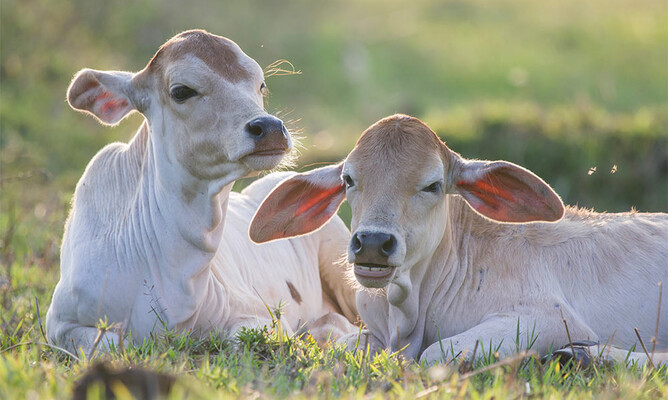
This disease is caused by deficiency of Selenium in the soil. When this occurs it affects the mineral levels of the animal, thereby damaging the muscles and causing white muscle disease.
The symptoms include; weakness, especially in the older cows, and a weakened immune system in younger calves.
Prevention and Treatment
My cattle once experienced this disease; it was disturbing experience. They were always either lying down weakly or sleeping. I felt really bad watching them look this way. However, these treatments helped them, and I’m sure they will help yours too.
- Give your new calves selenium injections. It will really help their muscles. Make sure you get guide from your vet doctor.
- For your older cows provide them mineral supplements with an average daily intake of .25 pound per day should contain .08% Selenium to provide the recommended intake of .2 PPM Selenium daily. Intake of Selenium at five to 10 times above the prescription levels can result in toxicity or even death of the animal.
Hardware Disease

This kind of disease occurs when your cattle ingest foreign objects such as pins, screws, bolts, glass, pins and wires, thereby puncturing the wall of their reticulum. This causes infection and even damage of some sensitive organs, including the heart.
Symptoms of these disease are; no cud chewing, weakness, loss of appetite, swelling of the neck and brisket and stiffness. Immediately you notice these signs, please take the following actions:
- Place a magnet on the position where the object is and pull it out. This can be painful, but it’s safe.
- See your veterinary doctor for help concerning the wound to avoid other diseases like foot rot. Please don’t overlook this; it can be lethal.
Bloat

Bloat is a disease caused by the rapid fermentation of legume plants with a formation of high levels of gas as a by-product of the fermentation. They produce excessive gas which cannot be eliminated easily enough and could led to death of animal. If it is not noticed earlier the pressure can affect the internal organs.
Animals suffering from bloat usually suffer infertility. Animals infected usually have a slower passage rate in the rumen which allows more time for gas production, and these cattle would also consume 18 to 25 percent less forage before bloating than non-bloaters.
Prevention and Treatment
Alfalfa plants at an advanced stage can reduce the probability of bloating in your animals. So, provide these plants to your animals (both the affected and normal ones). A cow that has continuous access to alfalfa will have less bloat than one that had access for shorter periods of time each day. This promotes continuous and rapid rumen clearance.
You can also provide poloxalene additives for them. This will help to prevent your animals from having bloat.
Benefits Of Raising Cows
There are lots of benefit to raising cows. Trust me. They are numerous. After all your hard work your cows are going to make you happy. Beyond they joy of raising them and taking care of them like your children, some amazing benefits still awaits you physically.
Fresh Milk
You can enjoy fresh milk direct from your own cattle, whenever you want. Fresh milk are very nutritious, they can even be sold for higher cost than evaporated milk.
Good Manure
Their dung is usually large and is a treasure to farmers. If you have a farm, you can use it as manure. But if you don’t, you can as well sell it to other farmers as manure for their crops. The dung from the cattle is also used for compost making. During this process of compost making, the gas formed – methane – can be used for various purposes.
Leather for Production
Oh yes! Their skins can be used to produce leathers for bag and shoe production. Besides enjoying the meat, you can pass it through some chemical process to produce beautiful bags and nice shoes. So my dear shoe makers are depending on you to earn a living.
Young Calves
Your cows will definitely give birth to young calves, which can be sold when born. You can also raise them to grow and give birth as well.
Assorted Meat
Get ready to eat meat your heart’s content. You don’t need to go to the market to buy meat. When you kill one cow, all you need to do is get a refrigerator, because it will last you for months. I don’t assume you would kill a whole cow just for yourself though. You can always sell the meat if you want, and make some good money
Now you know how amazing and lucrative it is to raise cows. Indeed, cow business is money business. If you want to make some good money, investing in raising cows is indeed a great option.
Got any tips or questions? You can drop your questions, comments and tips in the comments section below.
